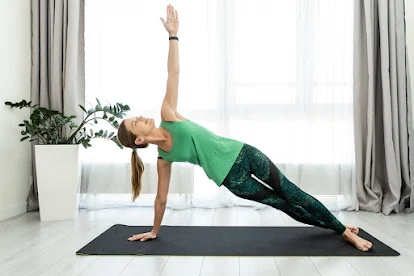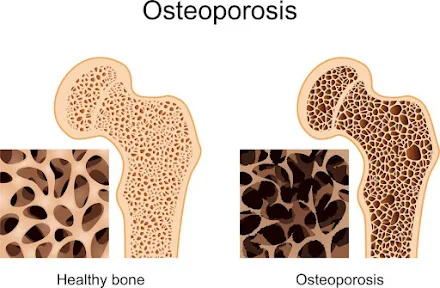Osteoporosis Treatment: How To Prevent Osteoporosis Naturally with Exercise
Eat meals with nutritionally balanced and rich in calcium can prevent osteoporosis. Early prevention of osteoporosis can be done in various ways, such as a balanced nutritional intake associated with bone formation such as calcium, vitamin D, and physical activity on a regular basis is essential for bone formation.
RELATED: 5 Powerful Home Remedies for Arthritis Pain Relief
Maintaining Healthy Bones with Exercise
Prevent Osteoporosis Naturally with Exercise no need any cost. Sport is very important and beneficial for our health. Moving for at least 10 minutes per day will make the brain become healthier, clear mind, stress is reduced and lead to feelings of happiness. In general, the brain will remain fit for a sufficient blood supply and the physical condition of being fit and avoided us from diseases.
Sports make a smooth blood circulation, burn fat and calories, as well as reduce the risk of high blood pressure and obesity is a matter of public knowledge. In one study, conducted by Tom Lloyd., An epidemiologist at Penn State University College of Medicine in a report that was published in the Journal of Pediatrics, the most revealing exercise works better than the administration of calcium in the formation of healthy bones and strong because it was more physical activity important than drinking milk to avoid the bone disease osteoporosis.
RELATED: What Are The Benefits Of Exercise?
Those who already have osteoporosis need to exercise or physical activity as part of treatment. Regular exercise and not only build muscle, but also maintain and improve bone strength.
Thus, exercise can reduce the risk of falls that can lead to fractures (broken bones). Sport exercises can strengthen our bones. Doing exercises regularly exercise and correct movement it will be useful in the prevention and treatment of osteoporosis.
Exercise, medication, and setting good food is a good combination to cope with osteoporosis compared to no treatment or only eating arrangements. It must be realized that it is never too old to exercise. Those who exercise regularly better bone density than those who did not perform physical activity.
READ ALSO: How To Treat Rheumatism And Arthritis
Those who are not physically active will decrease bone density. Consequently, can be concluded that the exercise we can prevent and reduce themselves from osteoporosis. Women usually first develop osteoporosis than men. If you are living a healthy life, the body can make savings more bone than is wasted within the framework of our body. But after age 35, bone removed (by our own bodies) is becoming more frequent, while savings remained the same bones.
At the time a woman experiences menopause, removal of bone mass increased due to the lack of estrogen. In most women, removal of more bone mass compared with bone formation. As a result, there was an alias osteoporosis bone loss. And at the age of 50 years, it is likely to experience a fracture due to osteoporosis is greater in the ratio of approximately one in every two people.
Fractures in the hip (groin) are the most alarming. But if you want to do these exercises regularly exercise with sufficient size, the osteoporosis can be avoided or at least delayed. How much exercise is enough to help increase your bone density and what kind of exercise is good for you?
Types And Causes Of Osteoporosis
Postmenopausal Osteoporosis occurs due to lack of estrogen (the main female hormone), which helps regulate the transport of calcium into the bones in women. Usually symptoms of osteoporosis occur in women aged between 51-75 years, but could begin to emerge more quickly or more slowly. Not all women have the same risk for postmenopausal osteoporosis, a white woman and eastern regions more likely to suffer from this disease than black women.
Senile Osteoporosis, the result of a calcium deficiency related to age and the imbalance between the rate of bone destruction and formation of new bone. Senile means that this situation only occurs in the elderly. This disease usually occurs at the age of 70 and two times more common in women.
Secondary osteoporosis, experienced less than 5% of patients with osteoporosis, caused by another medical condition or by drugs. Osteoporosis can be caused by chronic renal failure and hormonal disorders and drugs. Excessive alcohol consumption and smoking can worsen osteoporosis.
Idiopathic juvenile osteoporosis is a type of osteoporosis that cause is unknown. It occurs in children and young adults who have hormone levels and the function of normal, normal vitamin levels and does not have an obvious cause of the fragility of the bones.
Risk Factors Of Osteoporosis
Along with age, organ function is decreasing. At the age of 75-85 years, women have a two-fold risk compared to men in the experience of the tubercular bone loss due to aging, increased parathyroid hormone function and decreased calcium absorption.
Osteoporosis is more common in women. This is due to the influence of estrogen levels in the body begin to decline from the age of 35 years. In addition, women also experience menopause that can occur at the age of 45 years.
1. Race / Ethnicity
2. Descent Patients Osteoporosis
If there are family members who suffer from osteoporosis, then be careful. Osteoporosis attacks patients with certain bone characteristics, Such as the similarity of stature and bone shape of the body. That means in a family line must have the same genetic structure of bone.
3. Lifestyle
Consumption of red meat and sodas both contain phosphorus which stimulates the formation of the parathyroid hormones.
Caffeinated and alcoholic beverages.
Besides caffeine and alcohol is a toxin that inhibits the formation of bone.
Those too lazy to move or leisure will be hampered osteoblast process (the process of formation of bone). Besides the bone density will be reduced. The more movement and exercise the muscles will spur bone to form a mass.
Turns Smoking cigarettes may increase the risk of osteoporosis. Smokers are particularly vulnerable to osteoporosis because the nicotine in it accelerates bone desorption. In addition to bone desorption, nicotine also make activity of the hormone estrogen in the body is reduced so that arrangement’s bone cells are not strong. In addition, smokers may experience hypertension, heart disease, and blockage of blood flow. If blood is obstructed, then the difficult process of bone formation occurs. So, nicotine clearly contributes to osteoporosis either directly indirectly. (20 Negative Effects of Caffeine on Health)
Less calcium.
If the body’s calcium is less than the body will release hormones that will take calcium from other body parts, including those in the spine.
Consuming Drugs corticosteroids are often used as an anti-inflammation in asthma and allergic disease does cause a risk of osteoporosis. If often consumed in high quantities reduce bone mass. Therefore, corticosteroids inhibit the process of osteoblasts. In addition, heparin and anti-seizure medications also cause osteoporosis. Consult your doctor before taking this type of drug that proper dosage and does not harm the bones.
Sports Program for Treatment of Osteoporosis
For those who have been affected by osteoporosis, different training patterns with prevention programs and should be done properly, carefully and slowly. In the early stages, preferably in joint flexibility exercises and gradually improved with strength training and limbs. When strength and endurance have increased, exercise time should be added.
The difference is important because the pattern of a particular exercise can increase the risk of fracture, for example, jump rope, heavy impact aerobics, gymnastics stools, the load on the ankle or wrist, and so on. Someone who has had a fracture due to osteoporosis may still often sick time to start practicing. Therefore, for those who have experienced a fracture of the spine in the last six months and still feel pain during physical activity start training slowly.
Similarly, for the risk of fracture, despite an unprecedented fracture. Due to reduced bone mass (which increases the risk for fractures) would increase if a person is not active and prolonged bed rest.
Form Of Exercise That Should Be Avoided
To be safe for those who already have osteoporosis, do not exercise that gives impact and loading on the spine. This means do not jump aerobics concussion (high impact aerobics). Do not exercise or physical activity that requires you to bend forward from the waist with a curved back. This means do sit ups, crunches, grabbing toes, or practicing with the rowing machine.
Do not also move easily cause a fall. So do not practice with the trampoline or gymnastics stool (step aerobics), practiced on a slippery floor, or use the hard soles of shoes or slippery.
Do physical activity that requires you to move your feet in any direction with the load. Hip which has weakened will be more prone to fractures through this exercise
Form of Safe Exercise
Safe exercise is walking. Walk at least with a speed of 4.5 kilometers per hour for 50 minutes, five days a week. Surely this is done gradually. In most people osteoporosis the street is ideal. Improved durability (endurance), agility (agility), reducing the possibility of falls, with the risk of injury is small anyway. Can also lift weights, both women and men, from free weights (dumbbells small) to weight training machines. Especially emphasized in the exercises in the hips, thighs, waist, arms and shoulders.
Should exercise to improve balance and agility, as well as back extensions. It is the opposite spine flexing movement, which should be avoided. Back extension exercises done with arched her back and quite safe. Exercises can be done sitting in a chair with or without load, with basic movement arch your back. These exercises strengthen the muscles that hold to the great spine straight, reducing the possibility of hunchbacked, reduce tiredness in the back, and strengthening the back. To help make your bone stronger you could do some exercises such as:
- Walk
- Hike
- Climb stairs
- Jog
- Play tennis
- Lift weights
- Dance
Calcium and Vitamin D Intakes Recommendation
To avoid osteoporosis Calcium and vitamin D is the most important vitamin & mineral which work to prevent this matter.
Recommended Calcium and Vitamin D Intakes
If you already understand the benefits of exercise for osteoporosis, why do not we take the time to do it while offset by eating foods that contain calcium. Good luck.









.jpg)




